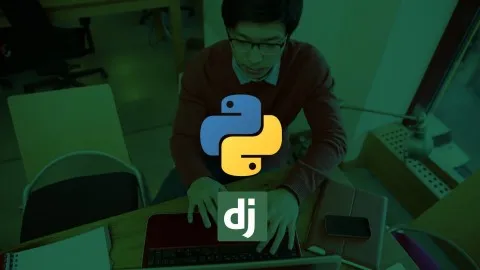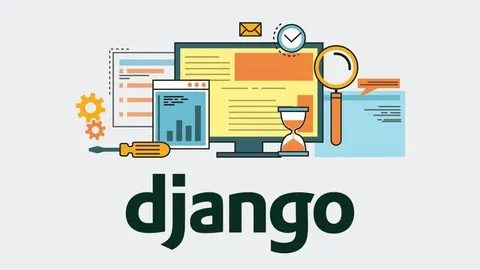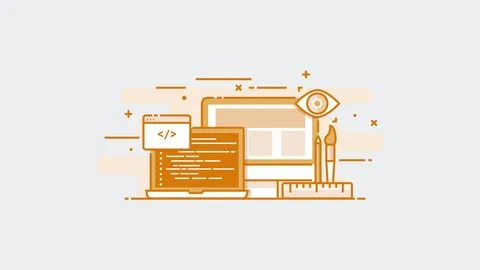
Try Django 19 Build a Blog and Learn Python& #1 Library 
This course provides an introduction to Django 1.9, the popular Python web framework. Students will learn to build a blog web application and deploy it to the real world. With step-by-step guidance, participants will gain a comprehensive understanding of the Django library. ▼
ADVERTISEMENT
Course Feature
![]() Cost:
Cost:
Free
![]() Provider:
Provider:
Udemy
![]() Certificate:
Certificate:
No Information
![]() Language:
Language:
English
![]() Start Date:
Start Date:
Self Paced
Course Overview
❗The content presented here is sourced directly from Udemy platform. For comprehensive course details, including enrollment information, simply click on the 'Go to class' link on our website.
Updated in [March 06th, 2023]
This course provides an introduction to the Django web framework and the Python programming language. Students will learn how to construct a Django blog, integrate Markdown with Django, and design a RESTful API with Django Rest Framework. By the end of the course, students will have a working blog and the skills to continue developing their own Django projects.
[Applications]
After completing this course, students should be able to apply their knowledge of Django to build a blog and integrate Markdown with Django. Additionally, they should be able to design a RESTful API with Django Rest Framework. Finally, they should be able to use Python's #1 library to create a powerful web application.
[Career Paths]
1. Web Developer: Web developers are responsible for creating and maintaining websites. They use a variety of programming languages, such as HTML, CSS, JavaScript, and Python, to create websites that are both functional and aesthetically pleasing. Web developers are in high demand, as businesses and organizations need websites to stay competitive in the digital age.
2. Data Scientist: Data scientists use data to solve complex problems and make informed decisions. They use a variety of tools, such as Python, to analyze large datasets and uncover patterns and trends. Data scientists are in high demand, as businesses and organizations need to make sense of the vast amounts of data they collect.
3. Software Engineer: Software engineers are responsible for designing, developing, and testing software applications. They use a variety of programming languages, such as Python, to create software that meets the needs of their clients. Software engineering is a rapidly growing field, as businesses and organizations need software to stay competitive in the digital age.
4. Machine Learning Engineer: Machine learning engineers use machine learning algorithms to create intelligent systems that can learn from data. They use a variety of programming languages, such as Python, to create algorithms that can identify patterns and make predictions. Machine learning is a rapidly growing field, as businesses and organizations need to make sense of the vast amounts of data they collect.
[Education Paths]
1. Bachelor of Science in Computer Science: This degree path provides students with a comprehensive understanding of computer science fundamentals, such as programming languages, algorithms, data structures, operating systems, and software engineering. It also covers topics such as artificial intelligence, computer graphics, and computer networks. With the increasing demand for software development and the growing complexity of computer systems, this degree path is becoming increasingly popular.
2. Bachelor of Science in Information Technology: This degree path focuses on the application of technology to solve business problems. It covers topics such as database management, web development, network security, and software engineering. With the increasing demand for IT professionals, this degree path is becoming increasingly popular.
3. Master of Science in Computer Science: This degree path provides students with an advanced understanding of computer science fundamentals, such as programming languages, algorithms, data structures, operating systems, and software engineering. It also covers topics such as artificial intelligence, computer graphics, and computer networks. With the increasing demand for software development and the growing complexity of computer systems, this degree path is becoming increasingly popular.
4. Master of Science in Information Technology: This degree path focuses on the application of technology to solve business problems. It covers topics such as database management, web development, network security, and software engineering. With the increasing demand for IT professionals, this degree path is becoming increasingly popular.
Course Syllabus
Welcome
Software Versions
On YouTube
System Setup
System Setup Links (PDF)
1 page
Introduction
Walkthrough
Before Getting Started
Versions & Install
First App & Model
CRUD
Writing our First View
Request & Response
Mapping URLs to Views
In App URLs
Django Templates
Template Context
QuerySet Basics
Get Item or 404 Query
Dynamic URL Routing & Patterns
URL links & Get Absolute URL
Model Form & Create View
Instance Update View
Django Messages Framework
Delete View
Template & Inheritance
Setup Static Files - CSS & Javascript & Images in Django
Implement Bootstrap
Pagination by QuerySet
File Uploads with FileField and ImageField
SlugField
Social Share LInks
Custom Template Tags
Basic User Permissions
Associate User to Post with a Foreign Key
Using Facebook Comments
Item Publish Data & Draft
Model Managers & Handling Drafts
Search Posts
Next Steps & Thank you
Welcome to Advancing the Blog
Blog from Try Django 1.9
Render HTML and Markdown
Implement Django Pagedown for Stack Overflow Style Markdown
Responsive Image inside of Post Markdown Content
Render Markdown & Django
Truncate and Django Template Tags
Dynamic Preview of Form Data
Django Crispy Forms
Bootstrap Input Groups
Django Generic Foreign Keys Part 1
Django Generic Foreign Keys Part 2
Django Generic Foreign Keys Part 3
Model Managers & Instance Methods
Create Comments
Reply to Comments
jQuery fadeToggle for Comment Replies
Comment Thread
Count Words & Get Read Time with Python
Blog Post Read Time in Django
Delete View with Confirmation
Delete Permissions & Http Status Codes
Basic User Login, Registration, and Logout
User Login & Form Validation
User Register Form & View
User Login Required
Breadcrumb Navigation
Thank you!
Welcome
Getting Started & Installations
API Module & ListAPIView
Serialize Model Data into JSON
Serializing Objects in the Python Shell
Retrieve API View aka Detail View
Update & Destroy (Delete) API View
Update & Delete in the Python Shell
Create Serializer and Create API View
Associate User with View Methods
Custom Permissions
Filtering a QuerySet in a ListAPIView
Pagination with Rest Framework
Hyperlinked Identity Field for URL
Serializer Method Field
Comments API
Comment Children & Reply Count
Comments in Post Detail API View
Comment Create Serializer Function Part 1
Comment Create Serializer Function Part 2
Comment Create Serializer Function Part 3
Update & Destroy Mixins
Comment Detail, Update, & Delete
Comment URLS & Post GET API Urls
User API Setup
ModelSerializer Create Method
Serializer Validation
Base APIView for User Login
UserLogin API Validation
User Detail Serializer
Django Rest Framework Settings
Django Rest Framework JWT & Curl Tests
Thank you!
1- Introduction
Start Project
First Migration
Apps
First View & Url Routing
Django Settings Overview
Template Configuration
Models
Model Form
Form Validation
View & Template Context
Form in a View
Custom Form in a View
Setup Email
Static Files in Django 1.8
Serving Static Files
Adding Bootstrap to Django
Django Templates
Third Party Library: Django Crispy Forms
Bootstrap Grid System
Styling MVP Landing Part 1
CSS with Blocks
URL Names as Links
Styling MVP Landing Part 2
Django Registration Redux
Update Django Login URL to Custom URL
Authentication Links in Navbar
Login Form in Bootstrap Navbar
Styling MVP Landing Part 3
Logo Image in Navbar
Promo Video & Images
Icons with Font Awesome
Content for Authenticated Users
QuerySet Basics
Settings for Different Environments
Using SSH for with Webfaction Secure Shell
FTP for Production Settings
Install PIP + Migrate + Static Settings
Fix Static Settings
Final One
Pros & Cons

Clear and concise instructions.

Good structure and pace.

Prompt instructor response.

Fast talking can be overwhelming.

Slugs are flawed.

Not suitable for beginners.
Course Provider

Provider Udemy's Stats at AZClass
Discussion and Reviews
0.0 (Based on 0 reviews)
Explore Similar Online Courses

Chess From Beginners to Advanced

Climate Information and Services

Python for Informatics: Exploring Information

Social Network Analysis

Introduction to Systematic Review and Meta-Analysis

The Analytics Edge

DCO042 - Python For Informatics

Causal Diagrams: Draw Your Assumptions Before Your Conclusions

Whole genome sequencing of bacterial genomes - tools and applications

Django 22 & Python The Ultimate Web Development Bootcamp

Complete Python Django Single-Page App

Django Takeoff: Developing Modern Applications
 Related Categories
Related Categories
 Popular Searches
Popular Searches
Quiz
 Submitted Sucessfully
Submitted Sucessfully
1. What is the main purpose of this course?
2. Which library is used in this course?
3. What is the main focus of this course?


Start your review of Try Django 19 Build a Blog and Learn Python& #1 Library